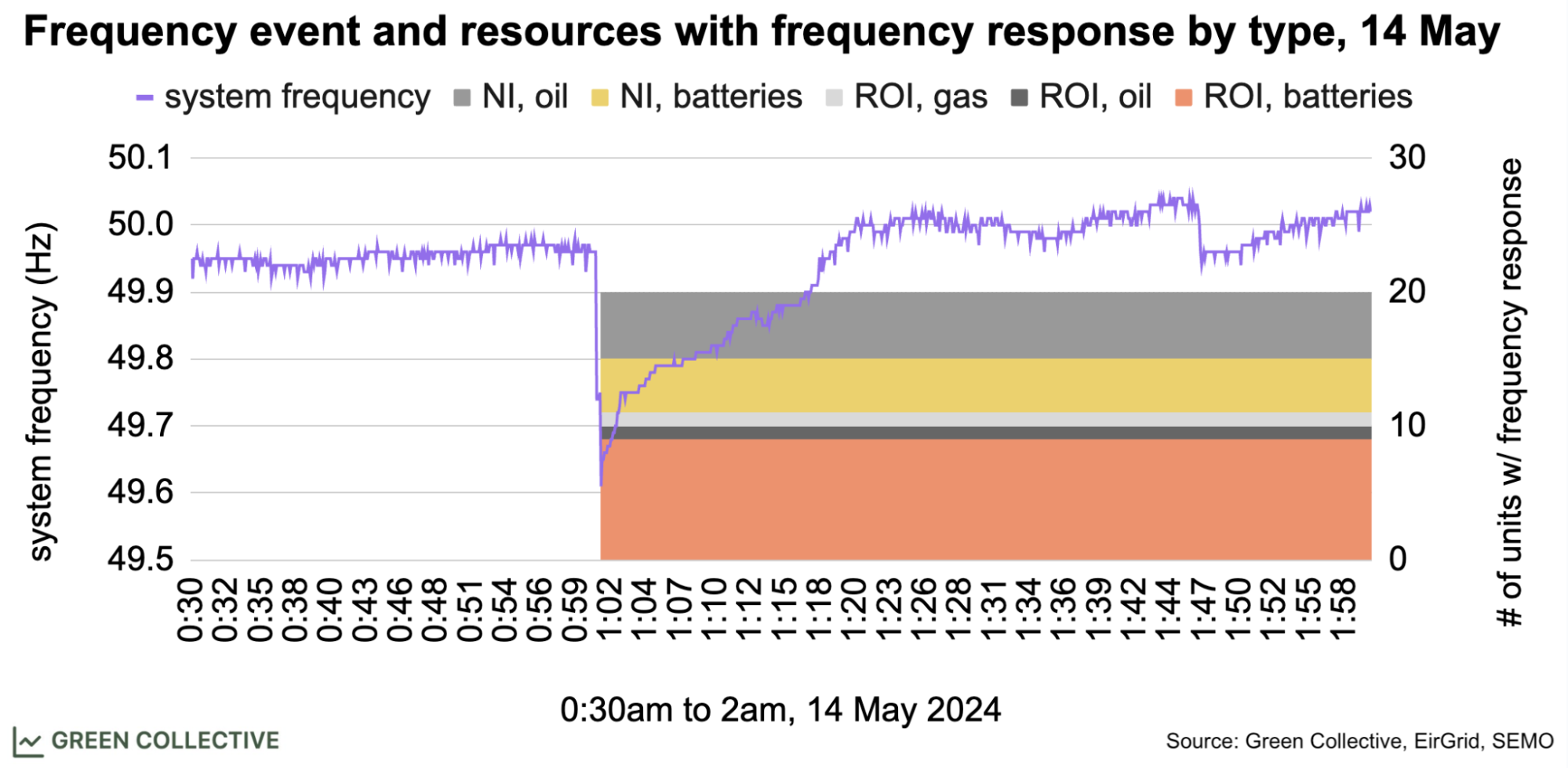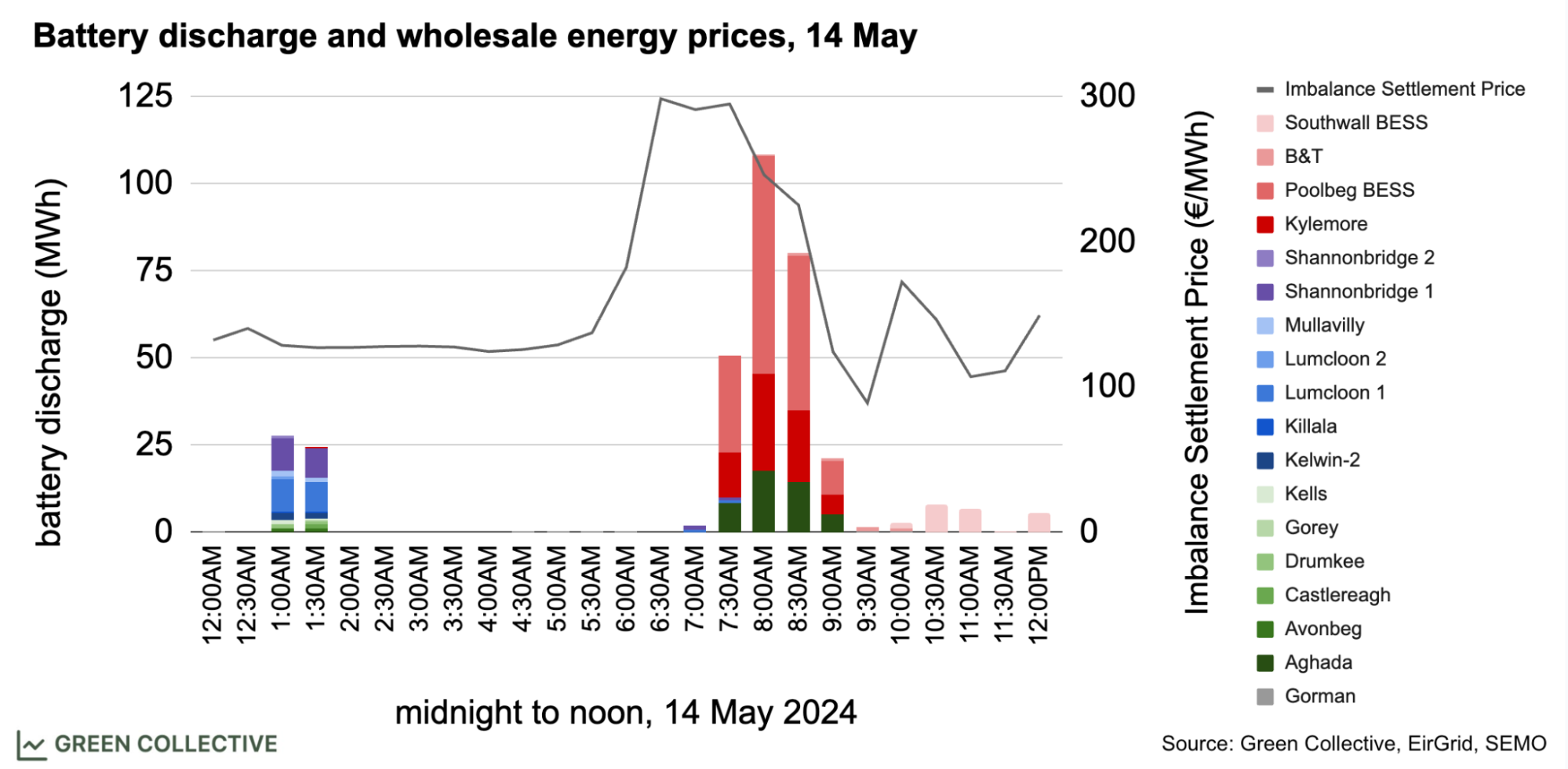At 1am on Tuesday 14 May, both interconnectors - the East West Interconnector (EWIC) between Ireland and Wales along with the Moyle Interconnector between Northern Ireland and Scotland - tripped. This means imports from Great Britain to the island of Ireland dropped suddenly shortly after 1am. The EWIC had no import or export activity until much later that day (after 6pm), while the Moyle was down between 1am and 3am.
When generation is much lower than demand - in this case due to two interconnectors being down simultaneously - frequency drops significantly. The frequency of the grid decreased significantly, to as low as 49.65Hz just after 1am. The system frequency on the island of Ireland is 50Hz and is normally maintained between 49.9Hz and 50.1Hz.
What happened next on the grid illustrates how different resources stepped in to provide frequency response and stabilize the grid: mostly batteries and some oil and gas. By 1:17am, the grid returned to normal levels of frequency.
It is important to note that the amount of inertia available from a generator is independent of power output and only hinges on the fact that it is online and spinning at grid frequency. We identified a list of resources that only activated at 1am on 14 May. These are the resources that provided frequency response services and returned the grid to normal.
Out of the 20 units with generation only starting at 1am to provide frequency response services, 11 are in the Republic of Ireland (ROI) and 9 in Northern Ireland (NI). Most of these units are battery energy storage systems (BESS): 9 in ROI and 5 in NI. This is a clear example of how batteries can activate within seconds to provide fast frequency response.
The vast majority of these batteries were connected to the grid in 2021 or 2022. They replace the need to activate more oil and gas units to regulate grid frequency. The chart below shows the drop and recovery of frequency during the early hours of 14 May, along with the types of units that contributed to frequency regulation.

Batteries are a big reason why there is less of a need to activate more oil units during frequency events. While batteries provided crucial frequency response, gas plants increased output to fill in the gap caused by loss in imports.
However, the fact that some oil units still had to be turned on led to a spike in imbalance settlement prices in the wholesale energy market. The effects weren’t felt until early morning peak time, when imbalance settlement prices jumped to almost €300/MWh at 6:30am. The chart below shows each battery energy storage system’ discharging activity throughout the frequency event and morning peak hours.

As discussed earlier, 14 grid-scale batteries across the island activated just after 1am to provide fast frequency response as part of ancillary services. By the time early morning peak hours arrived, a largely different group of batteries exercised energy arbitrage by selling when imbalance settlement prices were high, another key revenue stream for battery energy storage systems in Ireland.
This recent frequency event in Ireland illustrates clearly the value batteries bring to grid stability. It also demonstrates how some batteries mostly provide ancillary services like fast frequency response, while others can take advantage of arbitrage opportunities. It’s also worth noting that during this day with frequency issues and interconnector outages, there was zero coal generation across the island.